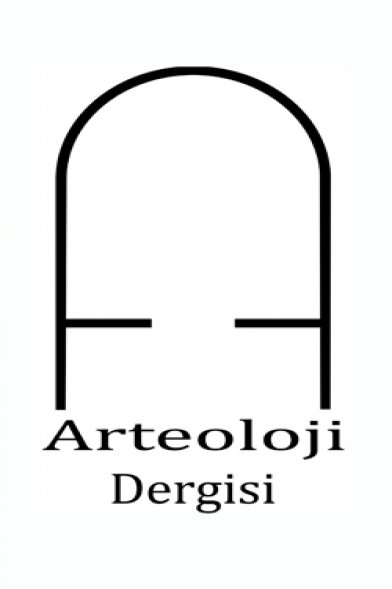JOSEPHINE BAKER’IN PORSELEN FİGÜRİNLERİ: MAKİNE ESTETİĞİ ÇAĞINDA EGZOTİZM VE DİŞİL CAZİBENİN DOĞALCI SUNUMLARI
Josephine Baker, makine estetiği, seramik figürin, Art Deco
JOSEPHINE BAKER'S PORCELAIN FIGURINES: NATURALIST PRESENTATIONS OF EXOTICISM AND FEMININE ATTRACTION IN THE AGE OF MACHINE AESTHETICS
Josephine Baker, machine aesthetic, ceramic figurine, Art Deco,
___
1stDIBS. (2022). Goldscheider Vienna Art Deco Dancer 'Beauty', by Stephan Dakon, Around 1942. 5 Şubat 2022’de https://www.1stdibs.com/furniture/dining-entertaining/ceramics/goldscheider-vienna-art-deco-dancer-beauty-stephan-dakon-around-1942/id-f_26509582/ adresinden alındı.
Andrew, N. (2020). Moving modernism: The urge to abstraction in painting, dance, cinema. Oxford University Press.
Artnet Worldwide Corporation. (2021). Past Auction. 11 Mart 2021’de http://www.artnet.com/artists/stefan-dakon/stephan-dakon-a-young-lady-with-a-small-hat-c8gAEKSKl0-h-oSKMFw05Q2 adresinden erişildi.
Ateşle Çeyrek Asır. (1994, 17 Şubat). Milliyet, s.22.
Bakla, E. (t.y.-a). VEDAT AR, "İstanbul'un 100 Çini ve Seramik Sanatçısı", 2010 (Erdinç Bakla archive) [Pinterest gönderisi]. 13 Mayıs 2021’de https://tr.pinterest.com/pin/548102217125044774/ adresinden erişildi.
Bakla, E. (t.y.-b). İsmail Hakkı Oygar 1932 Çılgın Dansözler (Erdinç Bakla Archive) [Pinterest gönderisi]. 13 Mayıs 2021’de https://tr.pinterest.com/pin/537476536757625337/ adresinden erişildi.
Bay-Cheng, S. (2005). Mama Dada: Gertrude Stein's avant-garde theatre. Routledge.
Brummett, B. (1999). Rhetoric of machine aesthetics. Praeger.
Cambridge University Press (t.y.). Figurine. Cambridege Dictionary içinde. 31 Mart 2022’de https://dictionary.cambridge.org/dictionary/english/figurine adresinden erişildi.
Catawiki. (t.y.) Charles Catteau for Boch - Josephine Baker figüre. 24 Mart 2022’de
https://www.catawiki.com/en/l/441189-charles-catteau-for-boch-josephine-baker-figure adresinden alındı.
Cheng, A. A. (2011). Second skin: Josephine Baker & the modern surface. Oxford University Press.
Christensen, H. D., Hjort, Ø ve Jensen, N. M. (2001). Introduction. H. D. Christensen, Ø. Hjort ve N. M. Jensen (Ed.), Art between the wars: New perspectives in art history içinde (ss.7-11). University of Copenhagen.
Cleveland Museum of Art. (t.y.). Nautch Dancer. 21 şubat 2021’de https://www.clevelandart.org/art/1930.118 adresinden erişildi.
D’Amato, L. (2020, 24 Eylül). The legacy of black musicians: Entertainer Josephine Baker. Clevelandclassical. https://clevelandclassical.com/wp-content/uploads/2020/09/JosephineBaker092220DAmtoFeature.pdf
Dickinson, E. R. (2017). Dancing in the blood: Modern dance and European culture on the eve of the First World War. Cambridge University Press.
Douglas Harper. (t.y.). Figurine. Online Etymology Dictionary içinde. 29 Mart 2022’de https://www.etymonline.com/word/figurine adresinden erişildi.
Elliot, B. ve Windover, M. (2019). Introduction: What’s the use of style? The case of Art Deco. B. Elliot ve M. Windover (Ed.), The Routledge companion to Art Deco içinde (ss.1-11). Routledge.
Francis, T. F. (2021). Josephine Baker's cinematic prism. Indiana University Press.
Green, T. T. (2022). See me naked: Black women defining pleasure in the interwar era. Rutgers University Press.
Henderson, M. G. (2003). Josephine Baker and La Revue Negre: From Ethnography to Performance. Text and Performance Quarterly, 23 (2), 107-133. https://doi.org/10.1080/1046293032000141338
Jerkins, M. (2016, 3 Haziran). 90 years later, the radical power of Josephine Baker’s banana skirt. Vogue. https://www.vogue.com/article/josephine-baker-90th-anniversary-banana-skirt
Josephson, S. G. (2016). From Idolatry to Advertising: Visual Art and Contemporary Culture. Routledge.
Kentgens-Craig, M. (2001). The Bauhaus and America: First Contacts, 1919-1936 (L. Widder, Çev.). The MIT Press. (Orijinal eserin yayın tarihi 1993).
Lucic, K. (1991). Charles Sheeler and the cult of the machine. Harvard University Press.
Matera, M. ve Kent, S. K. (2017). The global 1930s: The international decade. Routledge.
McCarren, F. M. (2003). Dancing machines: Choreographies of the age of mechanical reproduction. Stanford University Press.
Miller, J. (2005). Art Deco (Collector's guides). DK Pub.
Pile, J. (2005). A history of interior design (2.bs.). Laurence King Publising.
Ruiz, M.I. (2012). Black states of desire: Josephine Baker, identity and the sexual black body. Revista de Estudios Norteamericanos, (16), 125-139. https://core.ac.uk/download/pdf/51385209.pdf
Schmidt Art Auctions (t.y.). AUCTION 04 07/09/2005. https://schmidt-auktionen.de/12_artikel_details.php?nr=04&knr=333
Shen, A. (2020). Nevertheless, she wore it: 50 iconic fashion moments. Chronicle Books LLC.
Silk, G. (2003). “Our future is in the air”: Aviation and American art. D. Pisano (Ed.), The airplane in American culture içinde (ss.250-299). University of Michigan Press.
Sönmez, N. (1994, 21 Şubat). Eksikleri olan bir ‘Türk seramik sanatı’ sergisi. Cumhuriyet, 15.
WorthPoint. (t.y.). Vintage California Pottery Hedi Schoop Josephıne Baker. 13 Mart 2022’de https://www.worthpoint.com/worthopedia/vintage-california-pottery-hedi-schoop-josephine adresinden alındı.
Yasa Yaman, Z. (2009). Bauhaus ve söylemleştirilen iç mekân anlayışı: Yeni yaşam, yeni dekorasyon, yeni mobilya. A. Artun ve E. Aliçavuşoğlu (Ed.). Bauhaus: Modernleşmenin tasarımı: Türkiye'de mimarlık, sanat, tasarım eğitimi ve Bauhaus içinde (s. 201-240). İstanbul: İletişim Yayınları.
- Yayın Aralığı: Yılda 2 Sayı
- Başlangıç: 2022
- Yayıncı: Mustafa Gürbüz Beydiz
MERMER HEYKELLER ÜZERİNDEKİ PİGMENTLERİN ARKEOMETRİK İNCELEMELERİ
“BÜTÜN SAADETLER MÜMKÜNDÜR” FİLMİNDE SOSYOLOJİK AÇIDAN ÖLÜM
KENT ÖLÇEĞİNDE TAŞINMAZ KÜLTÜR VARLIĞI KORUNMA DURUMUNUN İNCELENMESİ: İZMİR ÖRNEK ALAN ÇALIŞMASI
Yıldırım Hasan Selekoğlu, Bekir Eskici
ERKEN CUMHURİYET DÖNEMİNDE ÇAĞDAŞLAŞMA RETORİĞİ VE EGEMEN PARADİGMANIN ÇAĞDAŞ TÜRK SANATINI İNŞAASI
